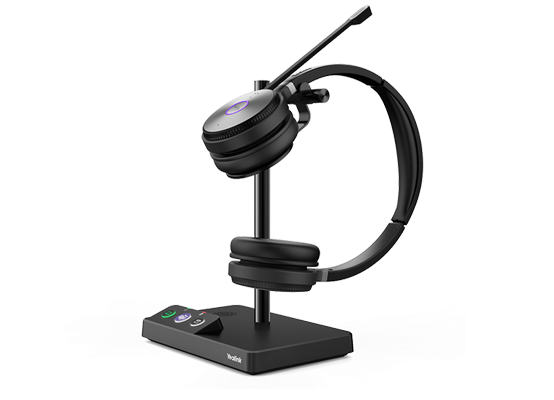Different Types of Wireless Headsets For Offices
Bluetooth Headsets
Bluetooth headsets are versatile and widely used for hands-free communication. They connect wirelessly to devices such as smartphones, tablets, and computers, allowing users to make and receive calls without being tethered to their devices.
DECT Headsets
DECT (Digital Enhanced Cordless Telecommunications) headsets offer excellent audio quality and longer wireless range, making them suitable for office environments where users need to move around while on calls.
USB Wireless Headsets
These headsets connect to computers or laptops via USB ports, making them ideal for unified communications, video conferencing, and softphone applications.
Wireless VoIP Headsets
Designed specifically for Voice over Internet Protocol (VoIP) systems, these headsets are optimized to work with VoIP software and platforms, offering seamless communication over the internet.
Noise-Canceling Headsets
Noise-canceling wireless headsets are equipped with advanced technology to reduce background noise, ensuring crystal-clear conversations even in noisy environments.
Monaural (Single-Ear) Headsets
Monaural wireless headsets feature one earpiece, leaving the other ear free to hear colleagues or the surrounding environment. They are ideal for call center agents who need to multitask or interact with colleagues while on calls.
Binaural (Dual-Ear) Headsets
Binaural wireless headsets cover both ears, providing better noise isolation and focus during calls. They are suitable for professionals who require full concentration and focus on their conversations.
Convertible Headsets
Convertible wireless headsets offer multiple wearing styles, such as over-the-ear, over-the-head, and behind-the-neck, providing flexibility and comfort for different user preferences.
On-Ear Wireless Headsets
On-ear headsets rest on the ears rather than encompassing them fully, offering a lightweight and breathable option for extended use.
When selecting a wireless headset for your business, you should consider factors such as audio quality, wireless range, battery life, comfort, compatibility with communication platforms, and the specific needs of their employees and work environment.

